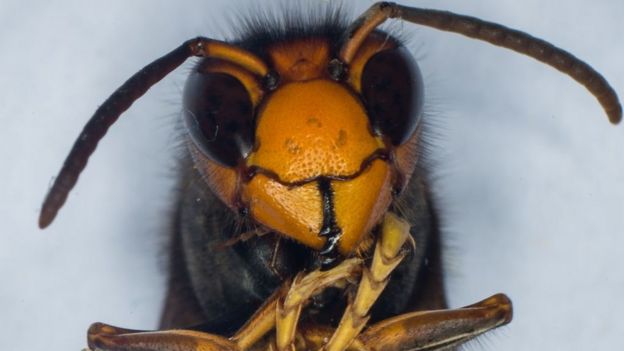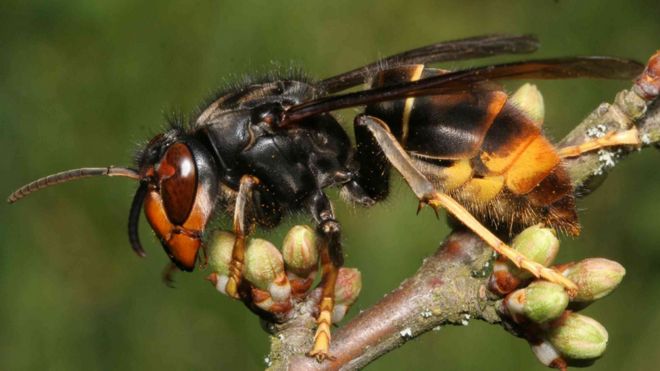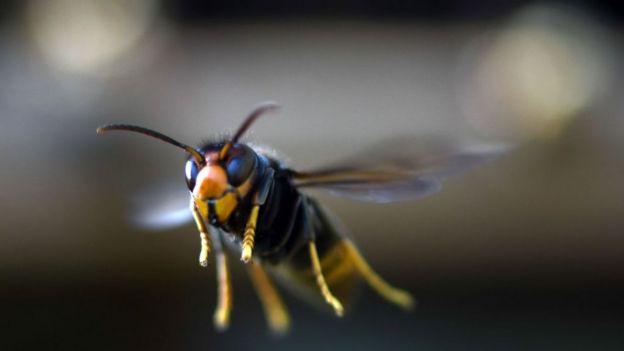
Even as the US and Canada remain under attack from the coronavirus outbreak, a new terror has arrived: "murder hornets". The 2-inch long Asian giant hornets have arrived for the first time, spotted on the west coast of British Columbia and in Washington State.
Multiple stings are deadly to humans and in their "slaughter phase" the hornets destroy honeybees, whose bodies they feed to their young. Scientists are now on a hunt for the hornets, hoping to eradicate the species before they wipe out the declining bee population . Though they typically avoid people, in Asia, "murder hornet" stings are thought to cause as many as 50 human fatalities a year, according to the New York Times.
Washington State University (WSU) are unsure how or when the hornet first arrived in North America, but beekeepers in the region have reported gruesome hive deaths in recent months. Scientists are bracing for further emergence of the species, which begins its life cycle in spring.

The hornets are "shockingly large", said Todd Murray, a WSU scientist and invasive species specialist. "It's a health hazard, and more importantly, a significant predator of honeybees."
The insects, roughly the size of a matchbox, have large yellow-orange heads, prominent black eyes, and a black and yellow striped abdomen.
"They're like something out of a monster cartoon with this huge yellow-orange face," said a bee breeder with WSU entomology department in a press release.
The Asian giant hornet's life cycle begins in April, when queens come out of hibernation, and begin to feed and seek out subterranean dens to build their nests. Once their habitats are built in the summer and autumn months, worker hornets are sent to find food. With their sharp, spiked mandibles, the hornets decapitate honeybees, using the bodies to feed their young. The hornets can destroy a honeybee hive in a matter of hours.
Though beehives are their primary target, when threatened the hornets can attack people. Multiple stings can kill humans, even those who are not allergic. In Japan, where they're most common, murder hornets kill roughly 30 to 40 people each year.
"It was like having red-hot thumbtacks being driven into my flesh," Vancouver Island beekeeper Conrad Bérubé told the New York Times. He was stung through a bee suit with sweatpants underneath.

Populations of honeybees and other pollinators in the US were already under pressure. Between 1947 and 2017, the number of honeybee colonies in the US plummeted from 6 million to 2.5 million. And last year, researchers from the University of Maryland reported that 40% of the country's honeybee colonies died in a single winter, between October 2018 and April 2019 - the largest loss of its kind.
Pollinators, most often honeybees, are responsible for one of every three bites of food taken in the US ( also Canada), and increase the country's nation crop values every year by more than $15bn, according to the US Department of Agriculture.
Bees are necessary to human life on this planet. We, literally, must save them to prevent future world wide starvation. We can help them by planting plants and flowers that are bee friendly, in our gardens. You can google the list of flowers that bees favour. Many species of plants, birds, insects, or mammals become extinct every day, (EVERY DAY). We are responsible for their destruction, when we should be responsible for their protection.
(Scientists estimate that 150-200 species of plant, insect, bird and mammal become extinct every 24 hours. This is nearly 1,000 times the “natural” or “background” rate and, say many biologists, is greater than anything the world has experienced since the vanishing of the dinosaurs nearly 65m years ago.)
No comments:
Post a Comment
Through this ever open gate
None come too early
None too late
Thanks for dropping in ... the PICs